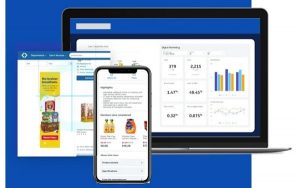Most marketers are gearing up for the new year and a new set of programs and campaigns. While planning will take some time, we here at TPG like to be pretty thrifty when it comes to campaign and program planning. Prospect engagement should look like an ecosystem of interactions. These interactions build on one another, thus engagements that you created in 2016, should be applicable to 2017. The more evergreen your campaigns, the more bang for your buck.
In a previous blog post, I outlined the campaign maturity model of how organizations can move from single, siloed and ineffective campaigns to multi-channel programs that meet revenue objectives. I’d like to continue the conversation and dive into the nirvana of campaign maturity which helps drive more efficient and evergreen campaigns – the master engagement architecture.
A Master Engagement Architecture (MEA) is an operationally strategic map of how a company plans to engage their various audiences across integrated tactics to meet their marketing objectives, per their go-to-market strategy. It defines what audiences will be communicated with uniquely vs. collectively and how the company will engage with them in various channels along the buying journey. Think of an MEA as a collection of programs. Most MEAs take organizations 6+ months to develop in the short term and are leveraged as a foundation for evergreen campaigns with agile campaigns sprinkled on top for time-sensitive initiatives.
We know you don’t have 6 months to wait around for a masterpiece! Below is a simple 5-step process as to how you can build your master engagement architecture:
Step 1: Set Your Objectives (Business and marketing objectives)
Starting with sales, outline the revenue objectives for the year. Break this down by product, segment or business unit. Break out net new customers from on-going current customer sales. Translate these revenue metrics into tactical marketing goals i.e. acquisition, MQLs, SQLs, Customer Lifetime Value.
Step 2: Create Campaign Templates (Campaigns, Channels, Tactics)
Sit down with your marketing operations team to develop 3-4 campaign templates that can be leveraged within your marketing automation system. Create templates that include different channels and tactics and include an asset inventory for each (number of emails, forms, landing pages, social posts, graphics ads, etc.) Template examples include a webinar template, a nurture template and an inbound acquisition template. These templates move beyond your marketing automation system as they should include assets across multiple channels.
Step 3: Design Campaigns
Using your templates as definitive parameters, design and plan your campaigns for the first quarter of the year. Include messaging, content plans, target audiences and goal metrics. Make sure your campaigns can be evergreen as opposed to a single use. If they are a single use, ensure that single use campaign leverages a campaign template so it is easier to produce.
Step 4: Fill in the Ecosystem
Once you have your goals defined as well as campaigns designed, you can begin to fill in your calendar. Start simple, replicate and grow your campaigns. Your production calendar should be for the first quarter with a milestone to plan each quarter based on the previous quarter’s performance.
Step 5: Adjust and Optimize
Quarterly, review the results of your campaigns. Adjust as needed when planning for the next quarter. Ask these questions to determine success:
- Did my campaign reach my goals? Why or why not?
- Can the campaign be used again to engaged net new leads as they meet the entrance criteria?
- Was the campaign easy to produce and can I replicate this for other segments?
As you set up your campaign planning for the coming year, I encourage you to follow this five-step process. Make 2017 the year you go from simply developing campaigns, to developing a Master Engagement Architecture.
Business & Finance Articles on Business 2 Community
(28)






